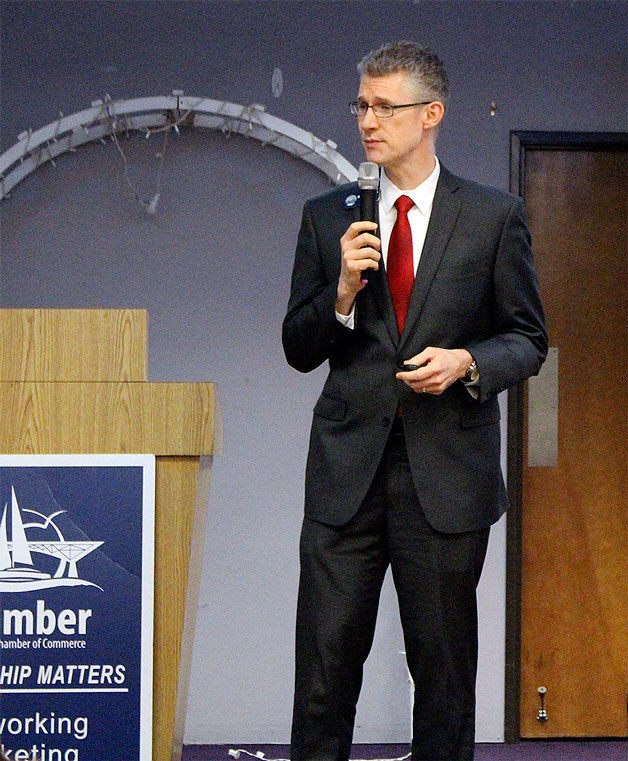The head of Oak Harbor Public Schools touted the accomplishments of local students at a State of the Schools address at the Greater Oak Harbor Chamber of Commerce luncheon Thursday, while acknowledging challenges ahead as the Navy base grows.
This year Oak Harbor students earned national recognition in a number of areas, including culinary arts, DECA, robotics and Naval Junior Reserve Officer Training Corps.
“Sometimes I’m not sure our community grasps that Oak Harbor is winning national awards,” said Superintendent Lance Gibbon. “These are amazing things we’re accomplishing.”
For the first time, Oak Harbor High School was rated this year in the top third of public schools in the country by U.S. News & World Report, earning the organization’s bronze medal. A number of factors helped push Oak Harbor up in the rankings, including strong results on state assessments and better graduation rates.
Some of that success is directly attributable to a 2013 voter-approved levy that allowed the district to offer more course offerings and opportunities for students, Gibbon said. The district offers 14 advanced placement courses. It also offers more career and technical classes such as a popular computer science program.
The future of education is “career readiness” — preparing students for not just college but also technical schools and apprenticeships that prepare students for jobs that are more in demand and can often pay better, he said.
The superintendent also shared the district’s efforts to prepare for an expected swell of incoming Navy families with young children. They’ve been told by the Navy to expect up to a 30 percent increase in personnel at Naval Air Station Whidbey Island in the next five years. Not all those families will live in Oak Harbor and send their children to school here. Even with that taken into consideration, the district expects somewhere between 400 to 500 more students. They’ve already started showing up; 188 new students district wide enrolled this year.
The increase has contributed to the highest number of full-time elementary students on record. On top of that, state lawmakers reduced class sizes and added full-day kindergarten, creating the need for more elementary school classrooms and teachers.
To meet the need, the district is adding eight more portable classrooms by fall for a total of 28 portables district wide. In the past few years the district has spent $2.5 million on portables.
Gibbon emphasized these aren’t the “smelly and dark” portables of his youth. He showed the audience a photo of the interior of a portable classroom.
“Portables are bright, well-lit … these are good learning spaces,” he said.
There’s a limit to how many portables each school site can handle, he said. By the fall of 2017, the district plans to turn Oak Harbor Middle School into a school for fifth and sixth graders, while North Whidbey Middle School will serve students in seventh and eighth grade. That transition will cost the district nearly $750,000 but it’s far cheaper than building a new school.



